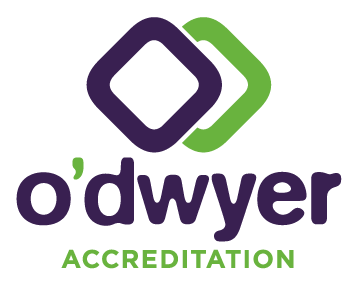
Do you ever get to the last months of the year and survey the wreckage of your laboratory’s internal audit program? Perhaps wondering if you can fit in a couple more before the end of the year and rein in the backlog?
Rest assured, you’re not alone!
Now is the best time to review your approach to the audit program. See how you can shake it up a bit and improve it, using our tips for creating a successful internal audit schedule and program.
Start by thinking about what determines the success of your audit program:
- Is it whether every single audit that was on the audit schedule was completed on time?
- Or is it whether senior management is happy with the outcomes and control of risks?
Then follow our three pro tips below.
1. Set objectives for your internal audit schedule and program
It’s easy to get caught up in just doing internal audits for the sake of it. Especially when you know NATA is coming. But you may be missing the point if you continue doing audits, producing reports, and recording only minor non-conformances.
This approach can cause us to lose motivation and our staff to become disenchanted as minor issues pile up. Or, you may find that you’re doing the same audits every year and not finding any non-conformances.
Look at your laboratory’s objectives. Consider how you could support them through the internal audit program. This will inform the type of approach you take with both your audit schedule and program.
Common objectives for an internal audit program are to:
- Fulfil external requirements (i.e. NATA and ISO)
- Identify potential risks
- Verify compliance with contractual and legal arrangements
- Identify improvement opportunities (waste) in laboratory processes
- Reinforce internal procedures and standards
Make sure you involve senior management in setting the objectives for your audit program – don’t just keep them to yourself!
2. Understand how to make an internal audit constructive
Many of us have been using the ‘tell me, show me’ style of audits for years, believing it’s the ‘right’ way to handle our internal audits.
But internal audits actually need a range of activities to be worthwhile.
If you follow the trail of references from ISO 15189 and ISO/IEC 17025 to look for a definition of the audit process, you won’t find one that specifies a particular approach.
Instead, the laboratory accreditation standards lead us back to ISO19011 guidelines for auditing management systems. These guidelines define an internal audit as: “a systematic, independent and documented process for obtaining audit evidence and evaluating it objectively to determine the extent to which audit criteria are fulfilled.”
This means any activity that provides you with the information needed to ‘determine the extent to which audit criteria are fulfilled’ can be an audit. Which allows you to include various activities as part of your audit program – as long as you collect and use the evidence to assess compliance with audit criteria.
It also means you can use internal auditors with various skills to gather the information.
When you combine this with a clear understanding of your organisation’s objectives for the audit program, you can develop a more focused program using internal audit techniques suitable for the information you want to collect.
For example, some audits may be mostly data-gathering exercises. While others could involve more discussion and evaluation of your staff’s understanding.
3. Adjust your internal audit schedule accordingly
It would be madness to stick to an audit schedule conceived in the peace and calm of January when new risks and opportunities arise during the year.
Above all, your internal audit schedule must be flexible.
It needs to align with your organisational objectives in the context of changing regulations, staffing, and new tests. Because the reality is, it may not always be feasible to do the audit when you originally scheduled it.
Unfortunately, some NATA staff have trouble understanding this. This means they may view every overdue audit as a non-conformance.
As a result, many laboratories have adopted various methods to avoid repeatedly being told by NATA that ‘you must stick to your audit schedule’ and ending up with a ‘major condition’.
A straightforward way to keep your schedule flexible is to record any changes to the audit schedule and who approved them. For example, note the change and approval in your meeting minutes.
Another way is to issue your internal audit schedule as a controlled document and reissue it each time you have to update it.
Naturally, when there are frequent staff changes in a section or new regulations and requirements, make sure you adjust the audit schedule. Management will be grateful you addressed these risks rather than simply continuing mindlessly with ‘routine’ audits.
Your next steps
As you can see, there are many different factors to balance when designing an audit program.
Keep the objectives in mind, remain open to different types of audits, and be flexible with your audit scheduling. If you can do this, you’ll have a program that actively assesses risk, updates the organisation to new requirements, and responds to changing external influences.
Does your internal audit schedule or program need some attention?
We can help you reset your audit program with a review and refresher training. Get in touch today.


